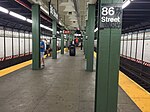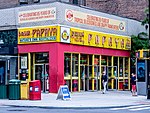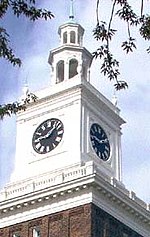Bay Ridge–95th Street station

The Bay Ridge–95th Street station (originally 95th Street–Fort Hamilton station) is the southern terminal station on the BMT Fourth Avenue Line of the New York City Subway. Despite the name, the station is located in the neighborhood of Fort Hamilton (as its original name implied) at the intersection of 95th Street and Fourth Avenue in southwestern Brooklyn. It is served by the R train at all times. Geographically, this station is the westernmost New York City Subway station. The station was first planned in 1922 as the first part of an extension to Staten Island through a tunnel under the Narrows. Construction began on December 17, 1923, after the construction contractor submitted, withdrew, and resubmitted its bid. The station opened on October 31, 1925, but the Staten Island extension was never built due to various funding disputes. The platform was lengthened in the 1960s.
Excerpt from the Wikipedia article Bay Ridge–95th Street station (License: CC BY-SA 3.0, Authors, Images).Bay Ridge–95th Street station
Geographical coordinates (GPS) Nearby PlacesShow on map
Geographical coordinates (GPS)
| Latitude | Longitude |
|---|---|
| N 40.616166666667 ° | E -74.031222222222 ° |







